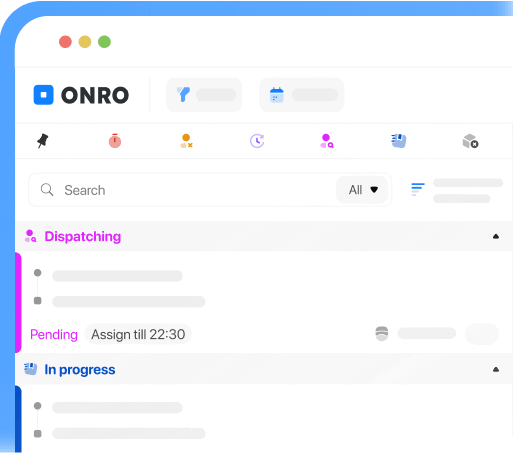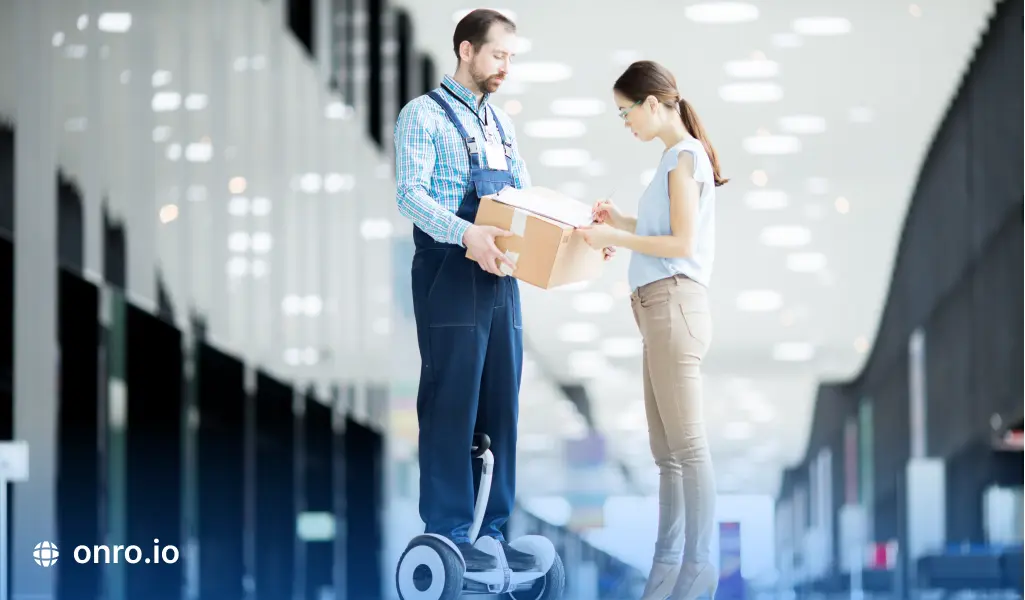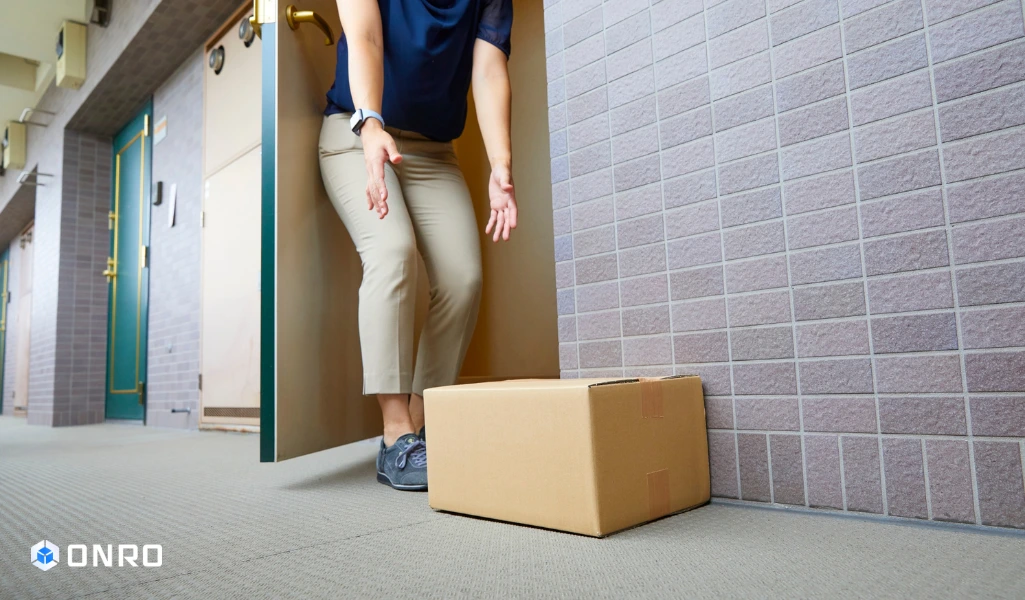More and more companies with very large supply chains and a significant number of orders are now using AI to automate their last mile processes. Indeed, with the quantity of data that is generated by the different links in the supply chain and logistics, AI makes it possible to avoid sources of error and save time and money to improve last mile optimization.
When you think of delivery businesses now using artificial intelligence, you probably immediately think of automation. Of course, some uses of AI include automating last mile processes that were originally performed by humans, but this only scratches the surface of the possibilities that can arise from the interweaving of AI and machine learning.
Try Onro for Free
Get your free access to the Onro All-in-one Last Mile Delivery Software.
Last Mile Optimization with AI
Means of last mile delivery are undergoing a revolution, particularly for a more sustainable environment, so delivery methods are also changing with delivery by drones, autonomous shuttles, electric vehicles, etc. It is at this point in autonomous transport that AI could shake up the world of delivery. Google recently launched its first drone delivery service in Australia through its Wing subsidiary. This is also the case for Amazon, which is testing its drone delivery service (Prime Air) for a better last mile optimization.
The last mile is the most complex part of delivery to manage with increasingly demanding customers who want more and more details on their deliveries (flexible hours, home delivery, relay point, package tracking, etc.). AI could facilitate this last stage of delivery thanks to the creation of an autonomous fleet, which will allow the development of algorithms to know satellite plans, traffic information, and the particularities of each city to have the best possible route and optimize a delivery person’s tour.
That’s not all, AI can also predict different elements, such as density on the roads, the probabilities of accidents and breakdowns, and the weather and measure the impact of these elements to be able to react more quickly.
Delivery represents a cost for businesses. As companies more and more frequently deliver to their customers with multiple delivery options, to limit costs, the delivery company can direct the consumer towards the most economically advantageous solution in relation to the available resources. This is where AI comes in, since it makes it possible to anticipate several things based on delivery times and points.
One of the great strengths of AI is its ability to process enormous volumes of data and to constantly adapt thanks to machine learning. It can help size fleets and vehicle fleets, promote better planning of drivers’ working time to optimize the entire process.
Managing Last Mile Delivery Routes with AI
Managing delivery routes is a complex task which is often the subject of significant but little-exploited margins for last mile optimization. And all the more so when it comes to individual deliveries to multiple points, and when the deadlines demanded by consumers are ever shortening (e-commerce deliveries, typically, or even home meal deliveries, which encounter great success).
A simple example is enough to realize the importance of these last mile optimization algorithms in the current context. Let’s take a hyperlocal delivery fast food business that receives hundreds of orders per day, and commits to delivering to all its customers in less than 40 minutes. AI and machine learning make it possible to anticipate peaks in demand, but also to predict which product categories will be more or less ordered depending on periods and exogenous factors.
The AI could, for example, advise waiting before launching a route because it will anticipate other imminent orders, thus making it possible to optimize both the filling of trucks and the routes.
These few examples show that the scope of application of AI is particularly broad in terms of transport management. Undoubtedly, AI will bring very significant benefits in last mile optimization, in particular thanks to its ability to exploit large volumes of data for even more reliable forecasts.
Why Is There a Big leap in the Use of AI for Last Mile Optimization?
Well, the opening of the secret has to do with the phenomenal amount of data that we generate every day with our online presence. It’s been clear for a few years that delivery services now have access to much more data than ever before.
Many people compare AI to human thinking and consciousness, but it is more likely to be a technology that automates last mile operations that were previously performed by humans. In simple terms, artificial intelligence is a technique that allows a computer or software to think like a human. The awesome AI is based on machine learning.
It is the science of how to make artificial intelligence learn and work like a person, and also make it constantly improve its abilities and knowledge based on the information provided. Essentially, machine learning is an area of AI with which it can analyze data, remember information, predict situations, reproduce certain models and select the best options for last mile optimization.
Last Mile Optimization with Onro
To respond to the constant flow of deliveries, the Onro last mile delivery software provides better visibility of schedules and acts directly on improving performance. You have better control and ideally manage vehicle flows. Safety in the delivery, for its part, is reinforced, and quality control of goods improved. From reserving the delivery slot to notifying the final recipient, including quality control, the Onro platform is therefore essential for delivery and courier managers.
Try Onro for Free
Get your free access to the Onro All-in-one Last Mile Delivery Software.

Conclusion
So, the role of AI in optimizing last mile delivery shouldn’t be neglected. It is crucial to remember that, although delivery is often free for the consumer, it represents a cost for the company. To minimize some of the costs, it is essential to anticipate delivery peaks.
The on-demand economy means increasingly frequent deliveries and last mile delivery options. To limit last mile delivery costs, the delivery or courier company can direct the consumer to the most economically advantageous option in relation to available resources. AI makes it possible to anticipate based on delivery times and points.


